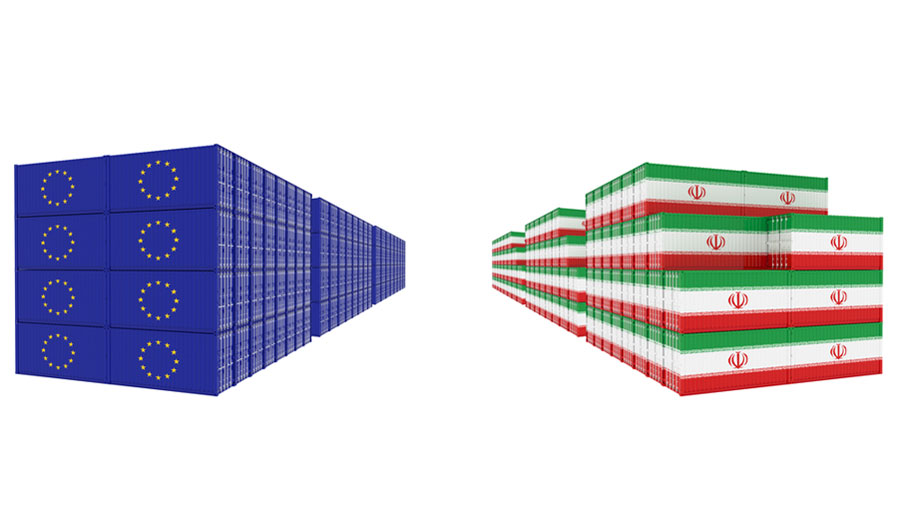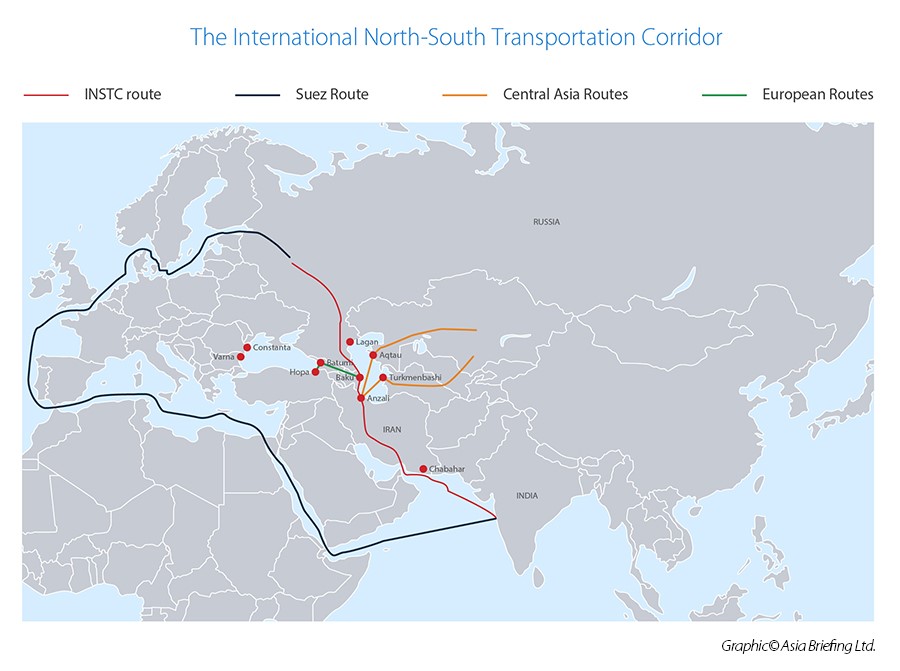INSTC Expected To Help Iran Double Its Eurasian Exports, With Implications Also For European Trade

New routes also open up the EU to the Caucasus and Turkey, the Middle East, East Africa, Central Asia, India, Pakistan and South-East Asia.
Alireza Peyman Pak, Chair of Iran’s Trade Promotion Organization, has stated that Iran is planning to double its exports to Eurasian counties, with the International North-South Transportation Corridor (INSTC) enabling Iran to have access to India, South East Asia, and African countries.
The development of the INSTC is of special relevance to the Ukraine situation and Russia, as Iran is also heavily sanctioned, cut off from SWIFT and has been forced to evolve and develop new supply chains. The INSTC does just this.
The Russia-Ukraine situation has essentially destroyed, via the imposition of sanctions upon Russia, the supply chains to Europe from Asia via Russia, and has cut off the northern supply chain route.
Using the INSTC – even though Iran is considered a pariah state by the United States – effectively reroutes Iran’s trade and repositions it east – juts as Russian trade is starting to shift. It is also a far more cost-effective and faster route than the conventional Suez Canal access to Europe via the Meditteranean.
Pak said that “Iran can supply dairy products, food items, construction materials, petrochemical products to Eurasian countries” and went on to say that Iran can increase exports to Russia.

As can be seen in the map above, Iran’s position on both the Persian Gulf and Caspian Sea now make it an important conduit for European-Asian trade. Goods from the EU can access the INSTC network to Asia via multi-modal logistics across the Black Sea to rail links in Turkey and Georgia, across the Caucasus to Azerbaijan’s Baku Port – which is already seeing record shipments of goods.
From Baku, goods can be shipped across the Caspian either north, to Russia’s Lagan Port and markets along the navigable Volga River in Russia’s interior – Russia has ten cities of 1 million consumers or more along the Volga basin.
Alternatively, they can head east via Kazakhstan’s Aqtau port to Central Asia and China, or via Turkmenistan’s Caspian Port to lucrative Central Asian markets such as Uzbekistan, which has a substantial trade agreement with the EU.
Alternatively, goods can be shipped to Iran’s Caspian Ports at Anzali and, from next year (at present it is road haulage) loaded onto a soon to be completed railway line and transported to Iran’s Persian Gulf ports at Chabahar and Bandar Abbas. Access is then swift to East Africa, the Middle-East, Pakistan, India and onto South-East Asia.
Meanwhile, considering the northern INSTC route, an Iranian business delegation is headed to Russia to showcase the country’s potential to Russian businessmen.
Related Reading
About Us
Chris Devonshire-Ellis is the Chairman of Dezan Shira & Associates. The firm assists British and Foreign Investment into Asia and has 28 offices throughout China, India, the ASEAN nations and Russia. For strategic and business intelligence concerning China’s Belt & Road Initiative please email silkroad@dezshira.com or visit us at www.dezshira.com





